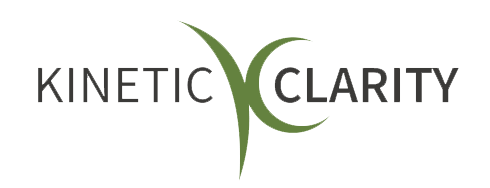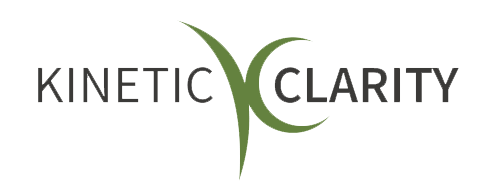What Happens When You Lack Confidence In Your Leadership Skills (or Your Leader)
Confidence is often touted as the backbone of effective leadership, especially in the business world.

Confidence is often touted as the backbone of effective leadership, especially in the business world. It's that underlying belief in oneself or in a leader that drives teams forward, fostering innovation and nurturing resilience.
But, what happens when that confidence wavers, either in yourself or in the person guiding you? The ramifications can be multifaceted and profound.
The Ripple Effect
Leadership, in many ways, serves as the heartbeat of an organization, setting its pace, tone, and direction. When a leader is brimming with confidence, it electrifies the atmosphere, sparking motivation, innovation, and trust. But, when that confidence falters or is conspicuously absent, the effects ripple out in ways both overt and subtle.
It’s not just about slower decision-making or unclear directives; it's about the nuanced shifts in team dynamics, the gradual erosion of trust, and the potential stifling of creativity and progress. From the boardroom to the breakroom, from strategy sessions to water cooler talks, the impact of leadership confidence, or the lack thereof, can profoundly influence the culture, productivity, and trajectory of an organization.
Below, we delve deeper into these ripple effects to fully grasp their breadth and depth.
Delayed Decision Making
A leader's hesitance often leads to stalling pivotal decisions. Whether it's hoping for more clarity or seeking validation, these delays can have wide-ranging impacts.
- Procrastination: Postponing crucial decisions may result in missed market opportunities or even lagging behind competitors.
- Overanalysis: The trap of "analysis paralysis" emerges when leaders incessantly re-evaluate data, seeking definitive certainty before action.
Unclear Communication
Clear and decisive communication is the hallmark of confident leadership. When it wavers, the effects are felt across the organization.
- Vague Directives: Ambiguous directives can lead to confusion and misaligned efforts.
- Frequent Changes: Shifting directions regularly can cause team confusion and project derailments.
Reduced Morale
The emotional tone set by a leader has profound effects on a team's spirit and motivation. Uncertainty at the top can trickle down, dimming enthusiasm.
- Doubt Contagion: Team members might start questioning their capabilities and the feasibility of projects.
- Decreased Motivation: Observing a faltering leader can sap a team's motivation, stifling initiative and innovation.
Reactive Instead of Proactive Stance
A forward-thinking approach distinguishes exemplary leaders. However, a lack of confidence can shift this, focusing on immediate fires rather than future vision.
- Short-term Focus: Leaders may become ensnared by immediate issues, neglecting long-term growth strategies.
- Avoiding Risks: An overly cautious approach can stymie innovation and growth.
Inconsistent Feedback and Recognition
Feedback is a two-way street in leadership. However, when confidence is lacking, the balance can tip, leading to unclear performance evaluations.
- Avoiding Difficult Conversations: Reluctance to offer constructive feedback can leave team members in the dark about improvement areas.
- Inconsistent Praise: A desire to be liked might drive leaders to offer undue praise, skewing performance perceptions.
Increased Dependence
Leadership should be about empowering everyone on the team. However, a crisis of confidence can lead to a narrowed focus, with increased reliance on a select few.
- Reliance on a Few: This can result in burnout for some and underutilization of others.
- Seeking External Validation: Over-reliance on external benchmarks can lead to misaligned organizational objectives.
Self-Perception and External Perception
For the leader in question, a lack of confidence can be debilitating. Self-doubt can become a self-fulfilling prophecy where negative beliefs fuel actions that validate those beliefs. This not only affects their performance but also how others perceive them. It's vital to remember that leadership confidence isn't just about how leaders see themselves, but also how they're seen by their teams and peers.
In the intricate dance of leadership, how a leader perceives themselves sets the rhythm, but the feedback loop with the team adds layers to the choreography. When self-perception is distorted by a lack of confidence, leaders might undersell their strengths or magnify their shortcomings.
On the other hand, if team members or peers start doubting a leader's abilities, the leader can often sense this shift, which can further amplify their insecurities. This delicate interplay between internal and external perceptions can either create a harmonious symphony or lead to discord. Finding equilibrium, where a leader's self-belief aligns with positive external feedback, is essential for maintaining the momentum and vitality of leadership.
So, How Do We Move Forward?
Leadership, like any journey, is fraught with its challenges, and moments of self-doubt are a natural part of this odyssey. In truth, every leader, irrespective of their accolades or achievements, has faced times when confidence waned. While it's a shared experience, what differentiates transformative leaders from the rest is not the absence of doubt, but the strategies they employ to navigate and rise above it. It's about acknowledging vulnerabilities, seeking feedback, and continually evolving.
Before delving into specific steps, it's paramount to recognize that the path forward isn't about feigning infallibility but embracing growth and adaptability.
Whether you're the leader questioning your abilities or a team member doubting your guide, it's essential to approach the situation with empathy and understanding. Here are some steps to consider:
- Open Dialogue: Engage in candid conversations. For leaders, this might mean seeking feedback and being open to it. For team members, it's about expressing concerns while still being respectful.
- Continuous Learning: Embrace opportunities to grow. Leaders can benefit from seminars, workshops, and even peer discussions to bolster their skills.
- Seek Mentorship: Both leaders and team members can benefit from mentorship. Connecting with someone experienced in the field can offer guidance, perspective, and reassurance.
- Celebrate Wins: Regardless of size, celebrate achievements. This not only builds confidence but also fosters a positive organizational culture.
- Practice Self-awareness: Understand what triggers your doubt. Is it a particular task, a specific environment, or a certain group? By recognizing these triggers, you can work towards addressing and overcoming them.
Wrapping Up
Confidence plays an undeniably pivotal role in business management and leadership. While the journey of cultivating unwavering belief in oneself or a leader isn't always straightforward, it's a pursuit that promises to yield not just personal growth but also organizational success. Remember, every great leader once faced moments of doubt—it's how they moved past them that defined their legacy.












